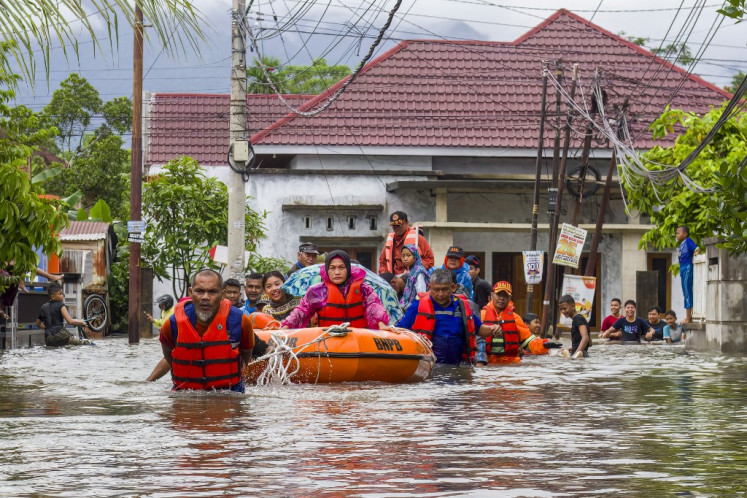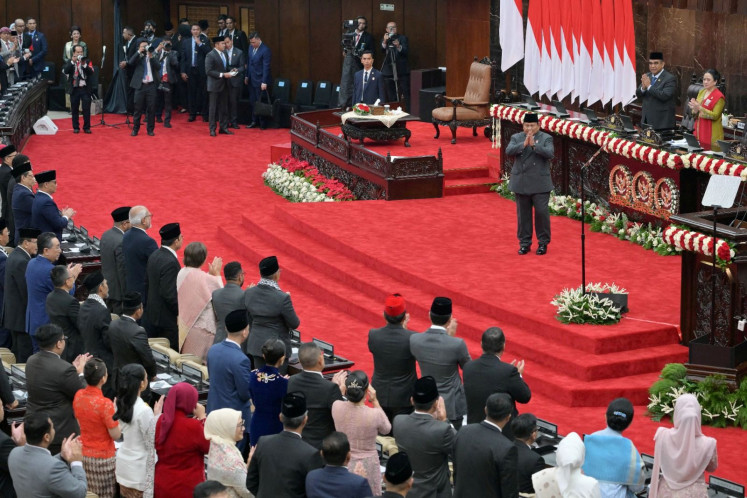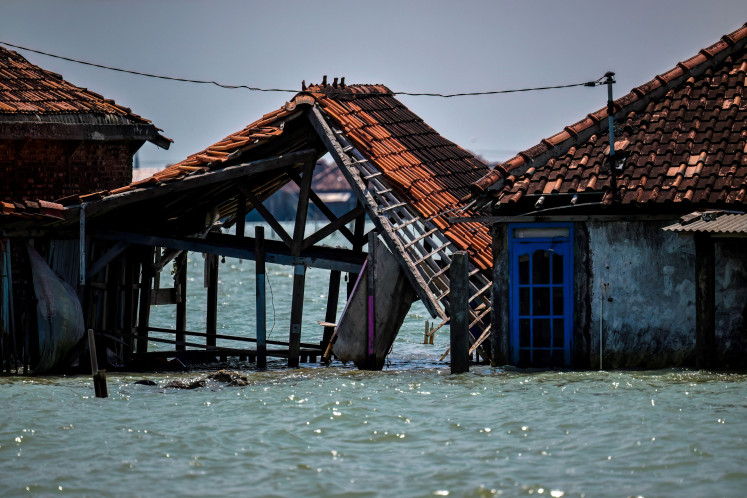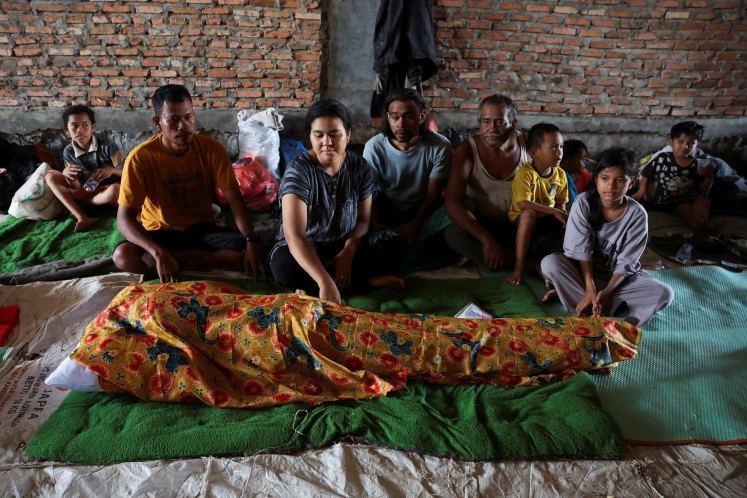Popular Reads
Top Results
Can't find what you're looking for?
View all search resultsPopular Reads
Top Results
Can't find what you're looking for?
View all search resultsManufactured famines in Gaza: Why haven’t they been halted?
There have been effectively three waves of famine in Gaza since spring 2024. First weaponized 18 years ago in the Strip, these hunger games could have been preempted several times. Why weren’t they?
Change text size
Gift Premium Articles
to Anyone
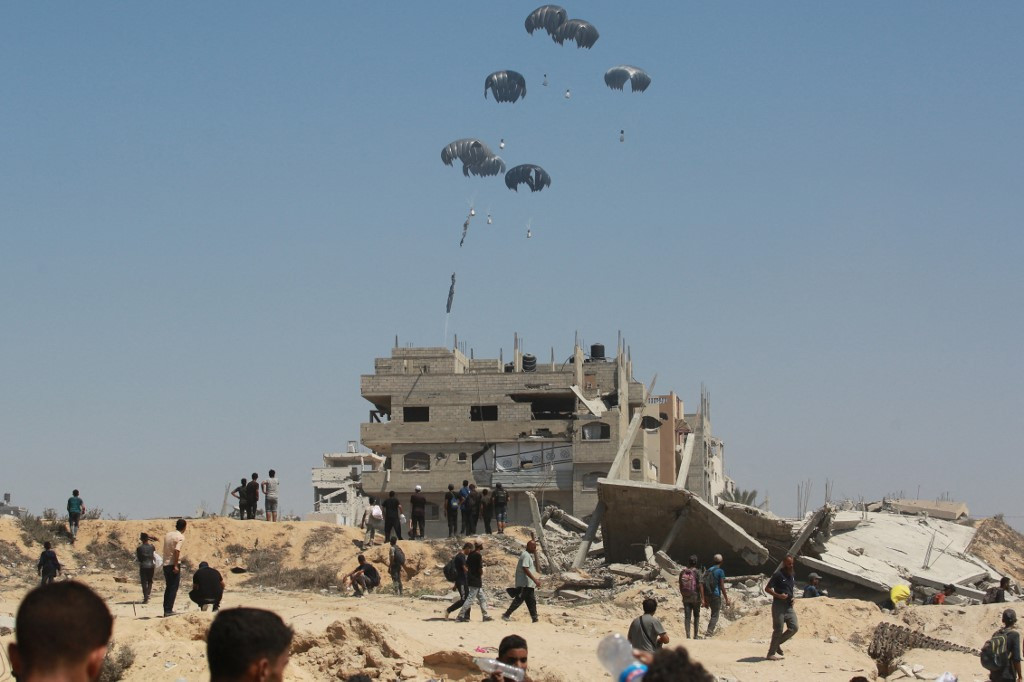 A military transport aircraft drops humanitarian aid over the northern Gaza Strip, on July 27, 2025. Jordanian and Emirati planes dropped food into Gaza on July 27, as Israel began a limited “tactical pause“ in military operations to allow the United Nations and aid agencies to tackle a deepening hunger crisis. (AFP/Bashar Taleb)
A military transport aircraft drops humanitarian aid over the northern Gaza Strip, on July 27, 2025. Jordanian and Emirati planes dropped food into Gaza on July 27, as Israel began a limited “tactical pause“ in military operations to allow the United Nations and aid agencies to tackle a deepening hunger crisis. (AFP/Bashar Taleb)
O
n Aug. 22, the Integrated Food Security Phase Classification (IPC), the global famine watchdog, declared widespread famine in Gaza. The IPC is regarded as the international gold standard in nutritional crises.
As international media was quick to point out, the declaration meant that a quarter of all Palestinians in Gaza are starving, more than 500,000 people, with that number expected to rise to more than 640,000 within six weeks.
What was most damning to most international media is that this outbreak of full famine as described by the IPC and United Nations agencies had been fully avoidable.
What should be far, far more damning is that several waves of famines have been widespread in Gaza for some 20 months and that precarious conditions of life and episodic famines have prevailed episodically in the Strip since 2007, that is, for almost two decades.
In the 2006 Palestinian election, when Hamas won a clear majority in all occupied Palestinian territories, Israel and the Middle East Quartet, the United States, Russia the UN and European Union, launched economic sanctions against the Palestinian Authority, Hamas parliamentarians and Palestinian territories. The sanctions were coupled with a blockade, Israel’s attempt to push the Gazan economy “to the brink of collapse”, according to a US diplomatic cable released by Wikileaks.
With the inception of its blockade in 2007, the Israeli government estimated how many daily calories were needed to prevent or to cause malnutrition in Gaza. The average daily calorie intake critical to survival is estimated at 2,100 kilocalories (kcal) per day. The Israeli “Red Line” document used a calculation of 2,279 calories per person.
During the 2008–2009 Gaza War, the Strip was subjected to a “Shoah” (Hebrew for Holocaust), as then deputy defense minister Matan Vilnai said. The idea was to “send Gaza decades into the past,” stated then commanding general Yoav Gallant.
Some 15 years later, Gallant was targeted by an International Criminal Court warrant “for the war crimes of starvation as a method of warfare.” But in 2009, he and other Israeli leaders complicit in the starvation games were ignored by international community.
By early 2023, months before Oct. 7, four of five Gaza’s residents were largely dependent on humanitarian aid and many suffered from widespread food insecurity, thanks to the Israeli total blockade. In March 2024, the 10-year-old Palestinian boy, Yazan al-Kafarneh, became the face of Gaza’s children. He died from malnourishment.
Then, just two days after the Hamas offensive of Oct. 7, 2023, Israel blocked the entry of food and water into the Gaza Strip, as it initiated a massive, largely indiscriminate bombardment, with subsequent ground operations.
By December 2023, over 90 percent of the Gaza population was estimated to face high levels of acute food insecurity, with 40 percent at emergency levels and over 15 percent at catastrophe levels. The UN experts cautioned of genocide, warning that Israel was destroying Gaza’s food system and using food as a weapon against the Palestinian people.
It was the first wave of famine in Gaza.
By June 2024, the IPC reported that the entire Gaza population remained at high risk of famine. Three months later, the UN concluded that through its “total siege […] Israel’s use of starvation as a method of war would affect the entire population of the Gaza Strip for decades to come, with particularly negative consequences for children.”
As the IPC estimates indicated, the second wave was expected to peak in early 2025. That it did not happen was due to the ceasefire in January 2025.
A second bout of famine was to be facilitated by a controversial General’s Plan,” led by Maj. Gen. (ret.) Giora Eiland, to lay siege to northern Gaza. It was a plan Prime Minister Benjamin Netanyahu was considering. Eiland argued that “Gaza women are the mothers, sisters, and spouses of Hamas murderers.” So, “epidemics in the South [of Gaza] will bring victory closer.”
In late 2024, the IPC projected that through spring 2025, Gaza would remain in an emergency state regarding food insecurity. Some 345,000 people would face extreme lack of food, starvation and exhaustion of their livelihoods and almost 900,000 would be in emergency state.
When the ceasefire fell apart, the second famine wave ensued and Israel blocked all humanitarian assistance to Palestinians in Gaza after March 1, 2025. A month later, at least 60,000 children in Gaza were at risk of serious health complications due to malnutrition.
By the end of September, more than 640,000 people across Gaza will face Catastrophic levels of food insecurity; classified as IPC Phase 5. An additional 1.14 million people in the territory will be in Emergency (IPC Phase 4) and a further 396,000 people in Crisis (IPC Phase 3) conditions.
Conditions in North Gaza are estimated to be as severe, or worse, than in Gaza City.
In comparative historical view, weaponized mass starvation is the common denominator of settler colonialism, including American Indian Wars, the German Herero and Nama genocide, the Nazi Hungerplan all the way to the Yemeni civil war and the genocidal atrocities in Gaza.
In this role, it is often associated with ethnic cleansing, as the pioneer of the Genocide Convention Raphael Lemkin noted, “after removal of the population and the colonization of the area by the oppressor’s own nationals”.
In May 2018, the UN Security Council adopted unanimously Resolution 2417 condemning the starving of civilians as a method of warfare and the unlawful denial of humanitarian access to civilian populations. Yet, in the course of the Gaza catastrophe, most tenets of the resolution have been consistently violated.
The recent "moral outrage" can be seen as the West's belated effort at absolution. In the past 18 years, the path to Gaza's genocide and mass starvation could have been preempted several times. That each of these fatal steps in the path to mass starvation and genocide were purposely ignored by the West and vetoed by the US suggests that "moral outrage" became useful only when the entire Gaza had been decimated and an entire generation of Gazans had been butchered.
It is this deliberate sanctification of mass butchery that will cast a long dark shadow over the West and everything it claims to represent in the early 21st century.
***
The writer is an internationally recognized visionary of the multipolar world, the founder of Difference Group, and author of The Obliteration Doctrine and The Fall of Israel. The commentary was originally published by Informed Comment





